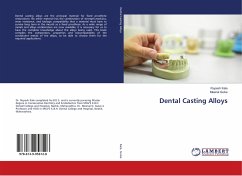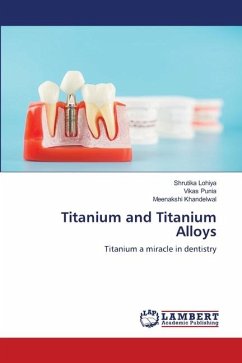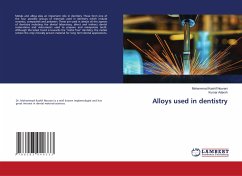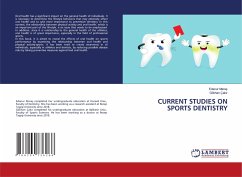
Polymetallism and oral galvanism
In vitro study
Versandkostenfrei!
Versandfertig in 6-10 Tagen
24,99 €
inkl. MwSt.

PAYBACK Punkte
12 °P sammeln!
Objective: the concretization of the galvanic current created by a coupling of metallic alloys used in dentistry. Materials and methods: For our in vitro study, we prepared six samples of alloys used in dentistry, to play the role of electrodes, and two electrolyte solutions, whose temperature, pH and electrical conductivity were previously measured. In the laboratory of the electric department of the ENIM, we realized a chemical pile constituted by a GBF (in alternating current), an ammeter and a voltmeter. For saline, the galvanic current produced by all the prepared samples was measured; wh...
Objective: the concretization of the galvanic current created by a coupling of metallic alloys used in dentistry. Materials and methods: For our in vitro study, we prepared six samples of alloys used in dentistry, to play the role of electrodes, and two electrolyte solutions, whose temperature, pH and electrical conductivity were previously measured. In the laboratory of the electric department of the ENIM, we realized a chemical pile constituted by a GBF (in alternating current), an ammeter and a voltmeter. For saline, the galvanic current produced by all the prepared samples was measured; while for saliva, the amalgam was chosen as reference. Results: Although saliva has a lower electrical conductivity than saline, it is still a good conductor of galvanic current. The galvanic current is low and close in value for all tested combinations. Conclusion: In the case of polymetallism, galvanism is scientifically established, so the dentist must make a well-considered choice among a variety of alloys.












